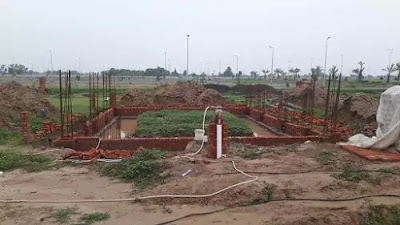19 Steps to Start Building Construction
1. Before designing any building it is important to follow the rules of structural design. Bear in mind that there will be no earthquake-resistant building without proper structural design.
2. Prior to building design, soil quality analysis and soil assessment report should be prepared by an experienced engineer.
3. Experienced engineers (civil engineers) should supervise the construction of the building so that the quality is maintained.
4. If quality cement, rods, sand are being used to the correct proportions remains to be seen. The carrying capacity of concrete cannot be lowered below 3000 psi under any circumstances. The civil engineers on service at the site under construction would have to test the cube or cylinder for that all the time. Avoid using excess water in concrete mixers. After casting, concrete should be cured using water.
5. High capacity rods should be used experimentally. The carrying capacity of the rod should be close to 70,000 psi. Use rods made from scrap or garbage should be avoided.
6. The plan and elevation of the building must be balanced.
7. Do not go beyond the design and build an extra floor. Expansion gap should be kept as per building code.
8. Do not suddenly lower the side of a very narrow and tall building. If it is to be reduced, then it has to be designed by three-dimensional dynamic analysis.
9. If the height of the building is more than 4 (four) times the width of the building, then the design should be done by analyzing the three dimensional dimensions.
10. Setbacks or abrupt measurements to the side of the building cannot be reduced. If you need to reduce it, then you need to build it by three-dimensional analysis, understanding the site effect.
11. For complex structural plans, three-dimensional earthquakes must be analyzed and designed.
12. The amount of seismic strength should be increased by placing the share wall or concrete wall in the right place.
13. The rate at which buildings are being built at the present time will only collapse if there is a moderate type of earthquake. So buildings with beams, columns and slabs have to be built.
14. The responsible engineer has to plan / design the building following the National Building Code and construct the earthquake resistant building.
15. To leave the ground floor empty for parking, the pillars on that floor need to be specially designed. Pillars should be enclosed with concrete walls as required.
16. The strength of the pillars has to be designed more than the beams of the building. At least 20% more should be done.
17. Based on the quality of the soil, the appropriate foundation has to be engineered and designed.
18. 5-inch brick walls are not at all safe for earthquakes. So these walls have to be made horizontally and vertically with thin rods inside the perforated bricks and attached to the lintel. You have to give lintel everywhere. Especially in the open space of doors or windows, 5 inch brick walls should be attached with thin rods.
19. Keep in mind that applying earthquake-resistant regulations to new buildings increases construction costs by only 2-3%.

